NOTE: With all of the answers below, If you have an alternate opinion about any one, please share! We are all here to learn from each other. Even the most experienced trackers continue to expand their knowledge through their own and others’ experiences, so don’t hesitate to share additional information, observations, questions, or experience.
There are 10 questions in this quiz, the first 5 are from the northeastern USA, and the second 5 are from South Africa. More exact locations are given with the individual questions.
Question 1.
This photo comes from Kersey Lawrence in Garamba National Park in the Democratic Republic of the Congo.
Who or what is it? What part of the body (wing or tail, right or left side)? Describe what you see.
Scroll down for the answer.
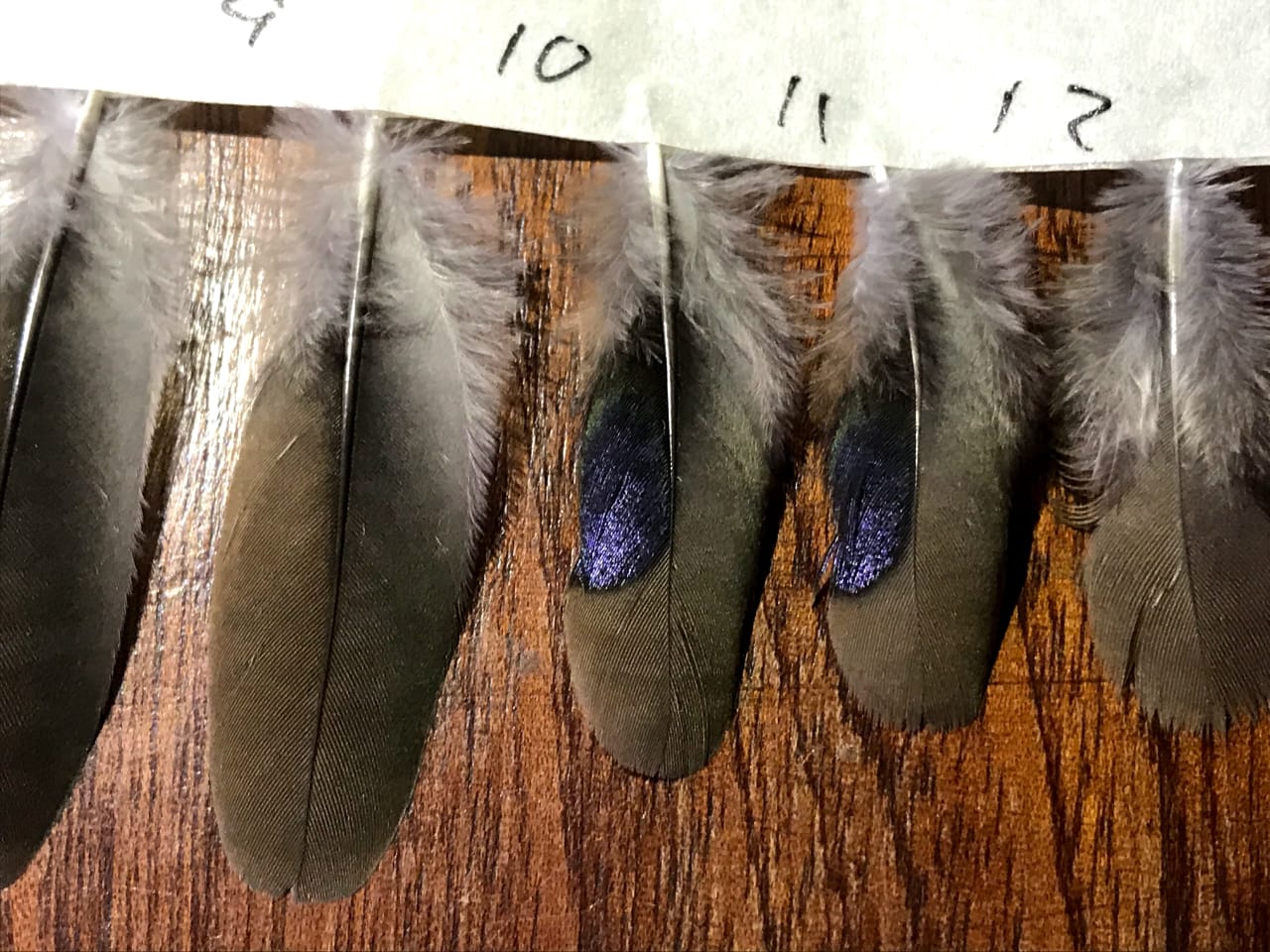
ANSWER: These are the feathers of a blue spotted wood dove, taken in Garamba National Park in the Democratic Republic of the Congo. Unfortunately, the bird hit a glass window of the lodge and died. So, we had the bird in hand to examine closely and made us of it’s feathers for our upcoming feather book. You can see it’s distribution, linked HERE. It’s very similar to the emerald spotted wood dove that is more common in Southern Africa. These bright blue spots are only on the secondary flight feathers and the coverts. The curve of most of these indicates the left side of the body.
Question 2.
This photo comes from Kersey Lawrence in the Greater Kruger region of South Africa (3 views of the same thing)
Who or what is it? Describe what you see.
Scroll down for the answer.
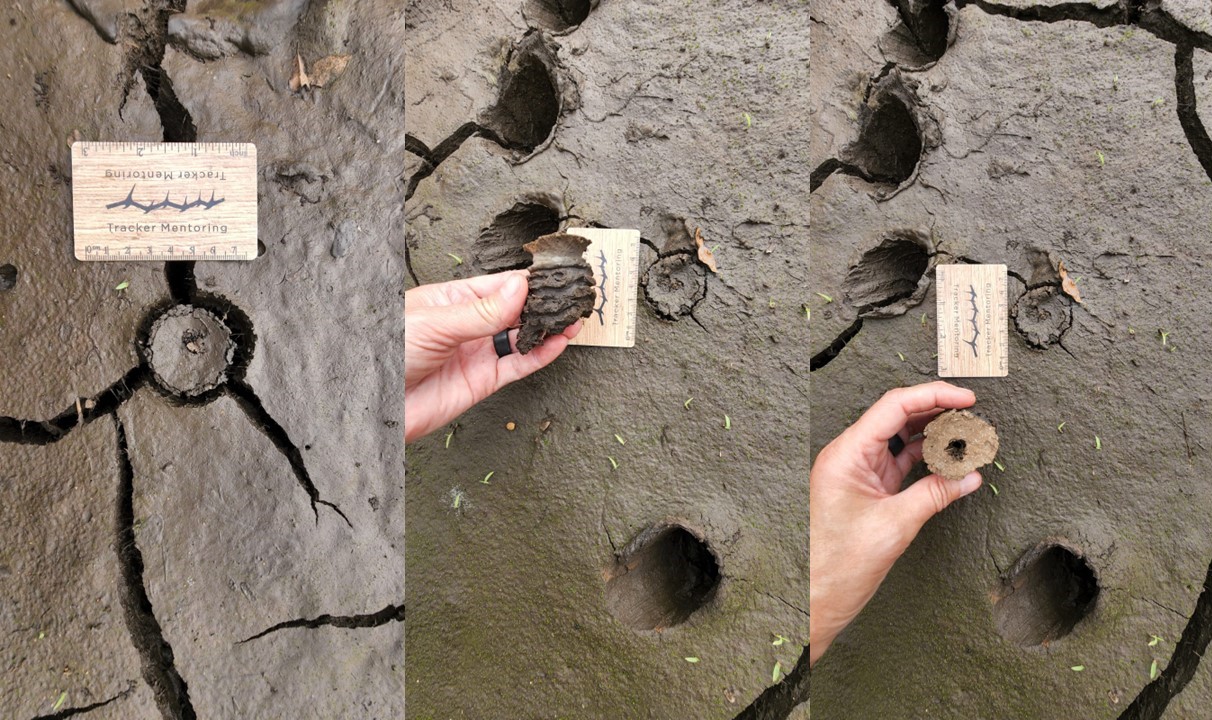
ANSWER: This is the larval chamber of a hippo fly, a creature which you can investigate, linked HERE. Lee and Kersey saw these on the edges of muddy pans, waterholes, and seasonal wallows for years before figuring out what they were by digging up some of them and investigating the maggot-like larvae inside. The adult female lays her eggs on grasses or sedges beside water. The eggs hatch and drop down into the mud where the “maggot” creates this tubular spiral around the edges, downward, where in pupates in the center before emerging out the hole at the top as a large fly. At least, that’s how we understand it, but there are a lot of unknowns. They are called “Hippo” flies because they often ride on large animals, such as hippos or warthogs that spend time in or near water.
Question 3.
This photo comes from Kersey Lawrence at Moholoholo Mountain View Reserve in the Hoedspruit area of the Greater Kruger, South Africa
Who or what is it? Describe what you see.
Scroll down for the answer.
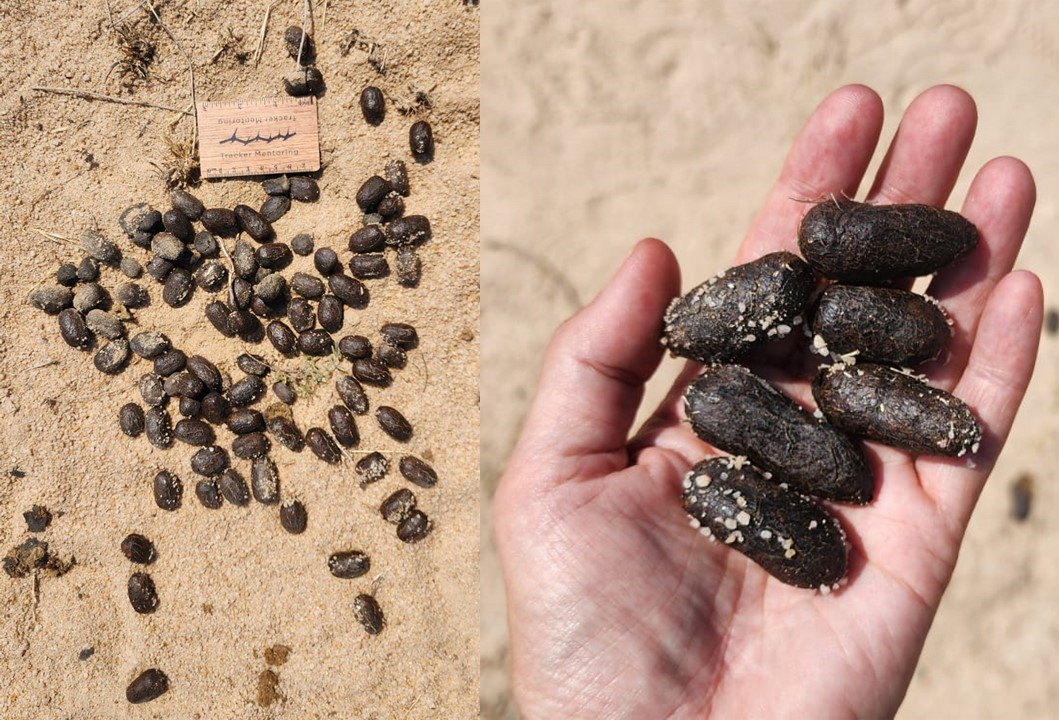
ANSWER: This is eland dung pellets from Moholoholo Mountain View, Near Hoedspruit in South Africa. Scat, dung, pellets, droppings, poo, whatever you call it, can be very tricky because it’s size and shape can depend on seasonal availability of different food types, and the body (health) condition of the animal. These are what we consider the common, or “classic” form of eland dung pellets: large, herbivorous, ruminant, and long. There were also tracks present, which helps to confirm 😉
Question 4.
This photo comes from Kersey Lawrence in the Hoedspruit area of the Greater Kruger in South Africa.
Who or what is it? Describe what you see.
Scroll down for the answer.
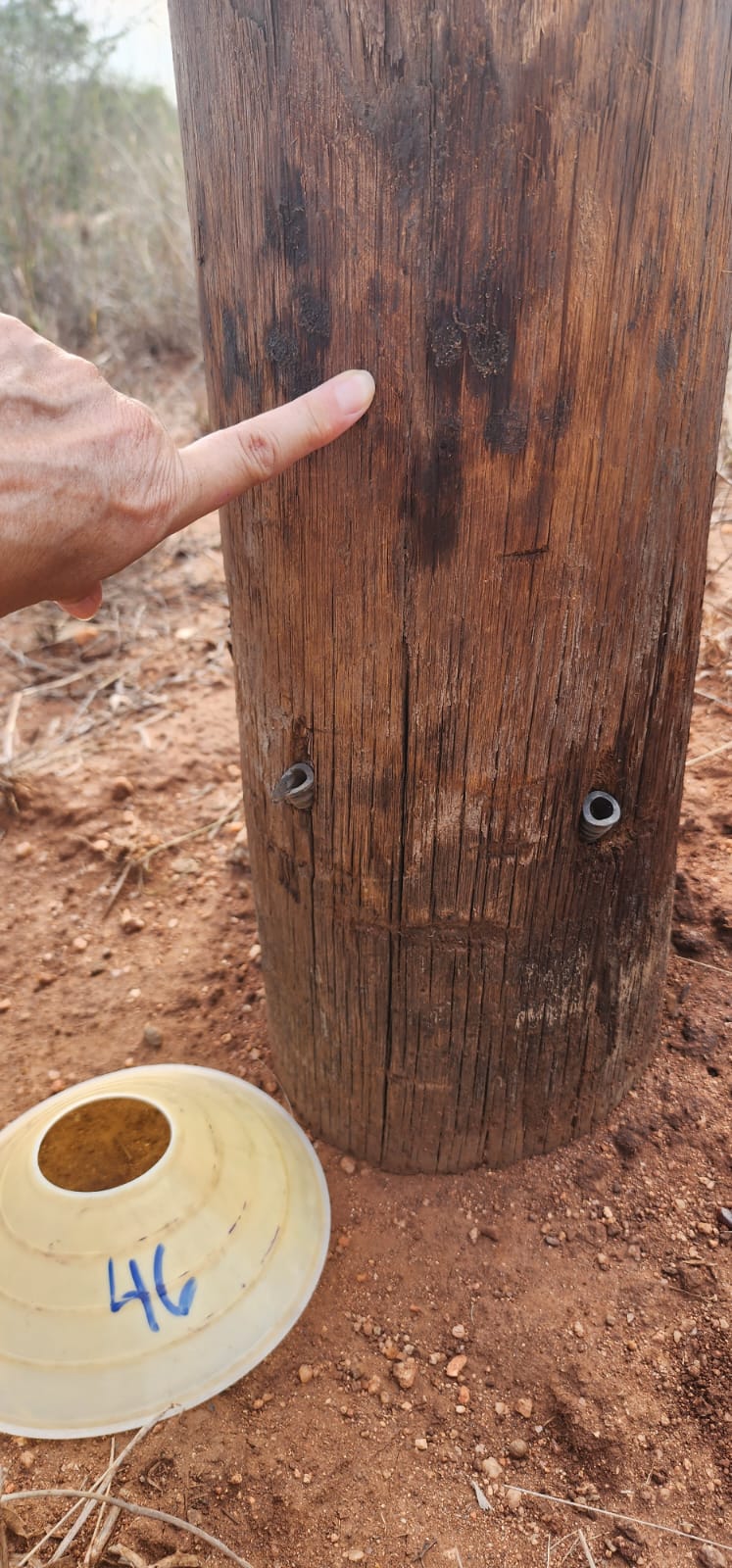
ANSWER: This is the pasting of an African civet, a beautiful black and white animal that looks like Africa’s version of a fluffy, spotted raccoon. Many animals scent mark. Some, like the African civet scent mark by extruding an anal pouch and sticking a gooey substance to an object, like a small bush, a blade of grass, a rock, or a power pole. Civet pastings are not usually high off the ground, about 8-12 inches, and many animals will use them repeatedly, which confuses the object of a scent mark – what are they using them to communicate? Many people can smell a pasting before they see it, and many people say that it doesn’t have an unpleasant scent (some do not like it’s strong musky odor). Civetone, one of the chemicals involved, was historically farmed from civets as a base component of fine perfumes.
Question 5.
This photo comes from Kersey Lawrence in the Hoedspruit area of the Greater Kruger, South Africa.
Who or what is it? Describe what you see.
Scroll down for the answer.
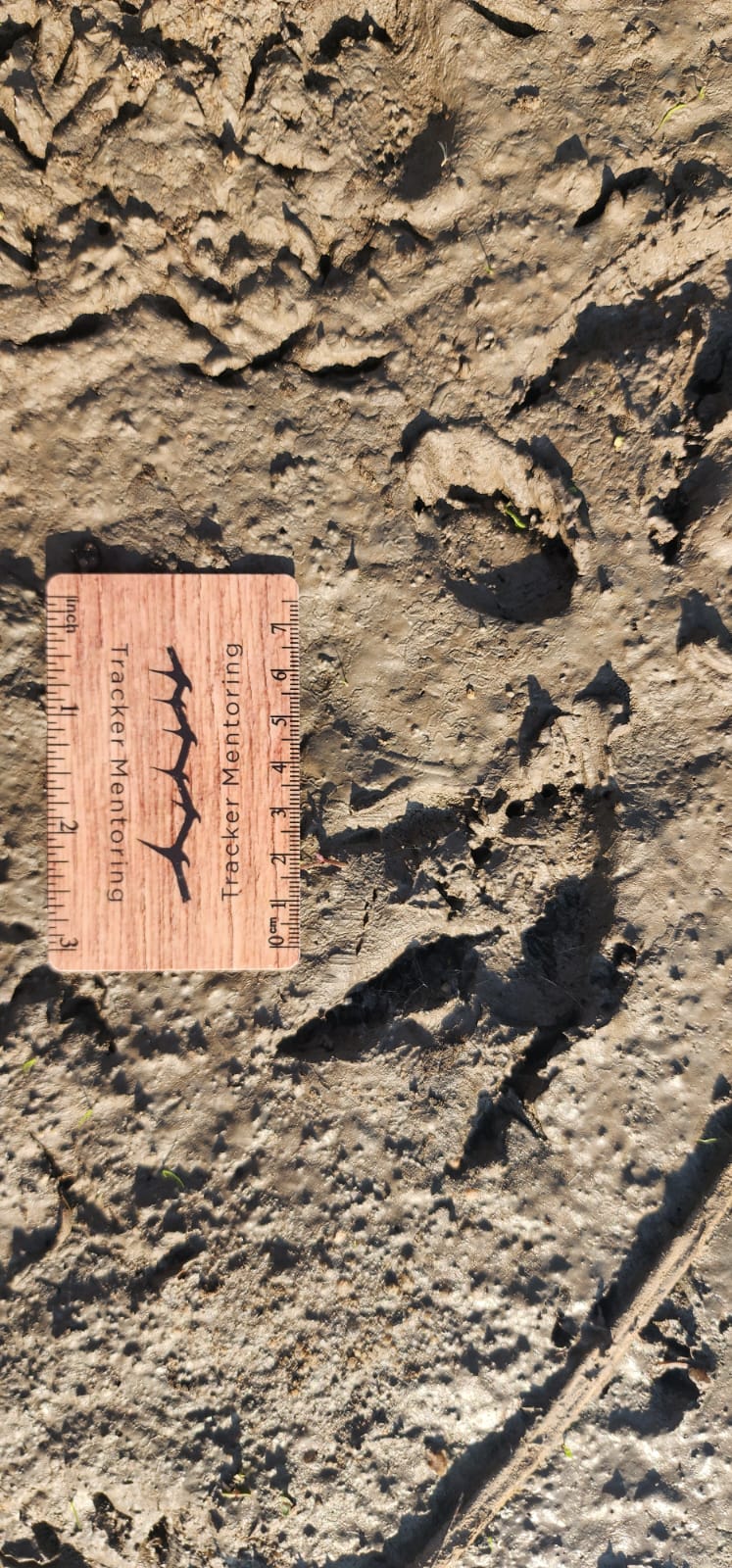
ANSWER: These are leopard tortoise tracks, from the right side of the body. We rarely see anything other than leopard tortoises get this big in our area, and often find them coming down to water for a drink. Those skewed oval tracks pointing in different directions (hinds face forward while fronts face inward) with obvious claws. Sometimes you can also see the “pebbling” from the bottom of the foot. It can be difficult to tell tortoise from terrapin tracks around water, but if you can count toes/claws (and they aren’t missing one or two from the hardships of life, or the substrate) tortoises have only 4 toes on the hind foot while terrapins have 5. Terrapin front and hinds tend to both point more forward, too. FYI: “turtles” live in the ocean.
Question 6.
This photo comes from Shane Hawkins in Western New York, USA.
Who or what is it? What part of the body? Describe what you see.
Scroll down for the answer.
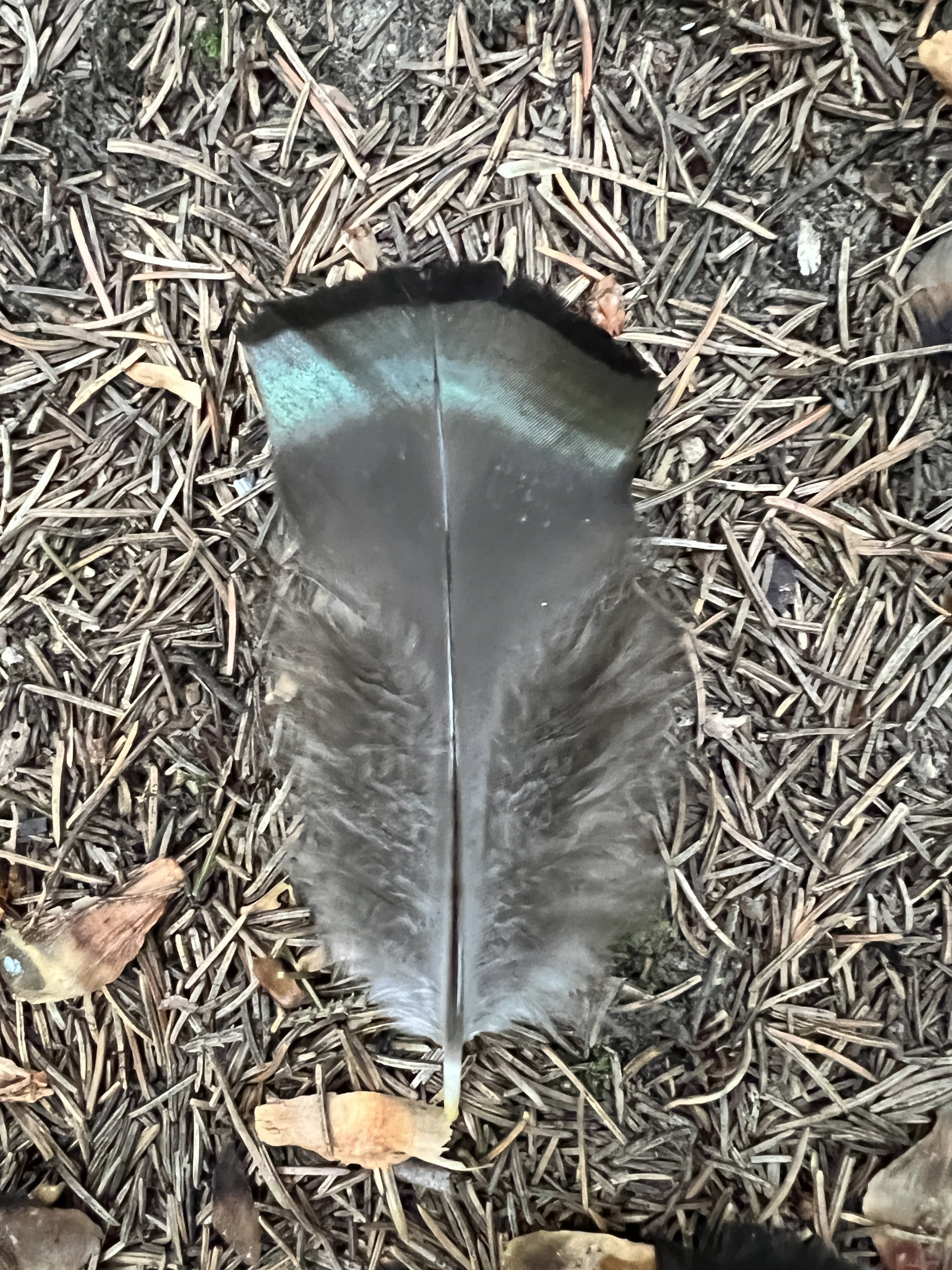
ANSWER: Not big enough or rigid enough for flight, and with that colorful, oily-looking sheen at the tip, this is the body feather of a wild turkey!
Question 7.
This photo comes from Shane Hawkins in Western New York, USA.
What made the sign shown on this green ash tree? Who or what is it? Describe what you see.
Scroll down for the answer.
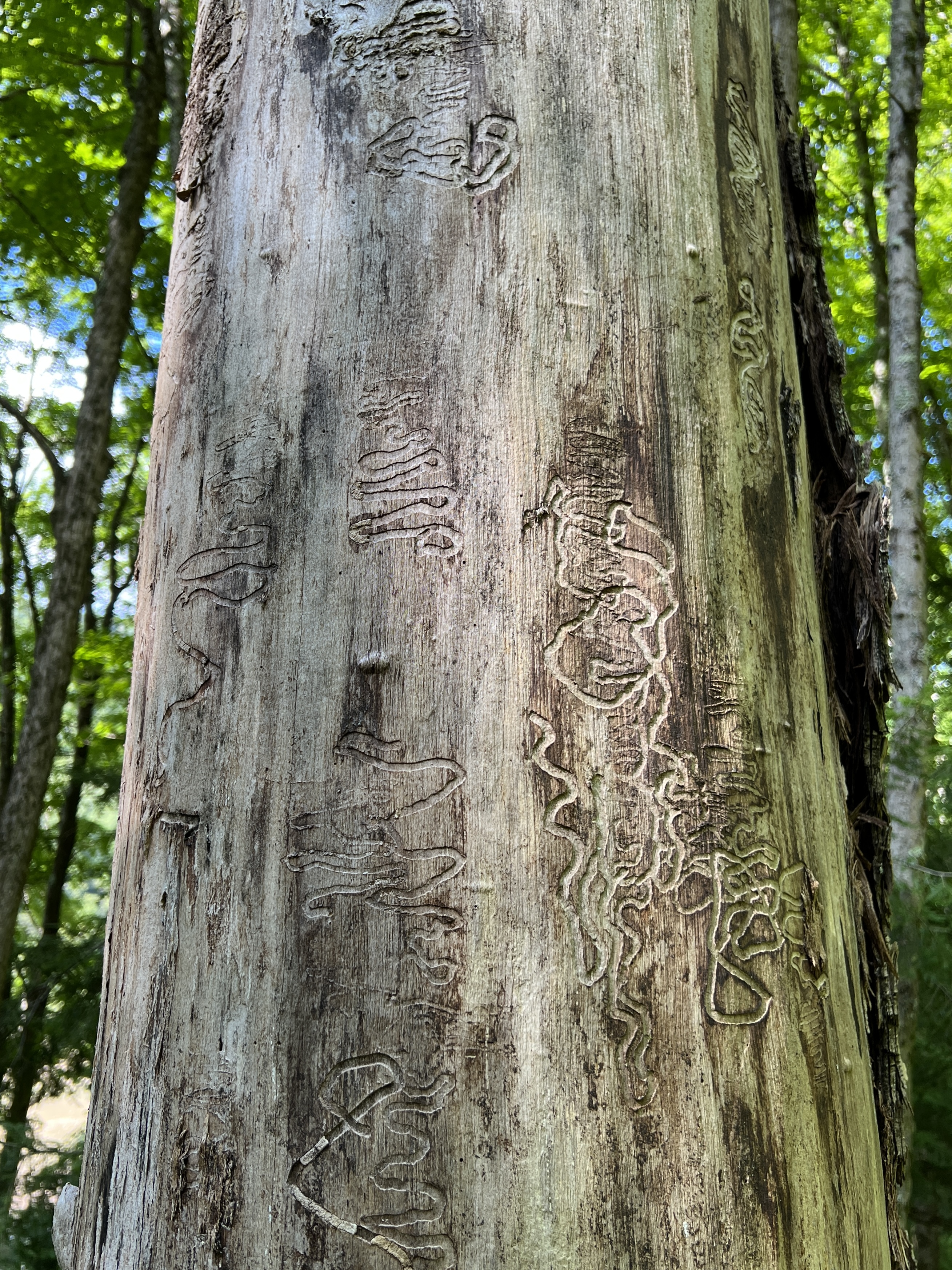
ANSWER: These are the larval tunnels, also called galleries, of the Emerald Ash Borer, an Asian species of beetle that has become a significant pest of ash trees in North America. These are important to recognize, because they devastate entire swaths of ash forest.
Question 8.
This photo comes from Shane Hawkins in Northwest Pennsylvania, USA.
Which foot of four is closest to the 3″ mark on the ruler? Who or what is it? Describe what you see.
Scroll down for the answer.
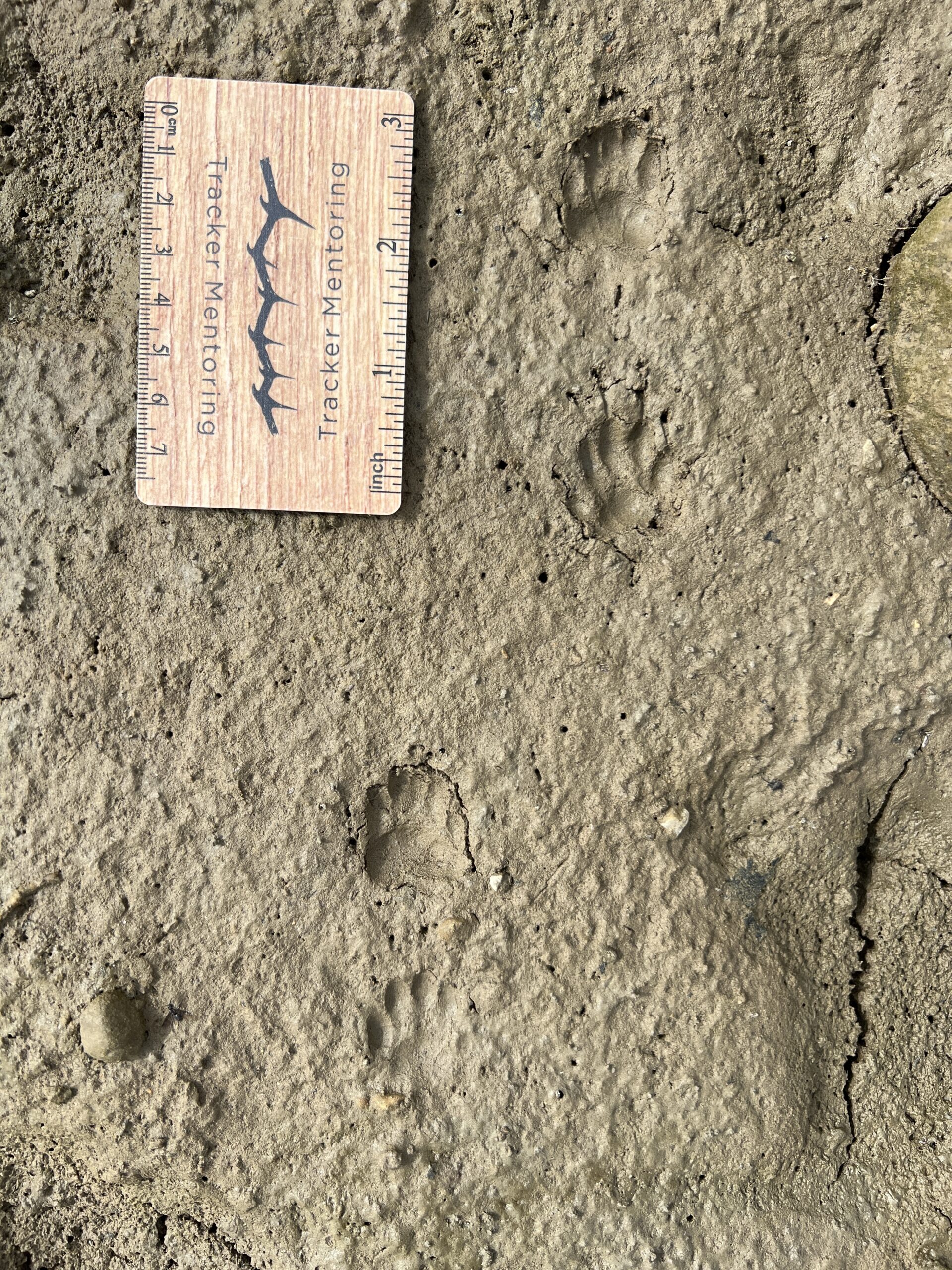
ANSWER: As described in our cover photo for the Jan 2024 newsletter, these are the tracks of a striped skunk. It is walking in an overstep walk, with the front left track being overstepped by the hind left track at the bottom of the photo, going up: FL, HL, FR, HR. Note the long claws for digging on the front tracks!
Question 9.
This photo comes from Shane Hawkins in Western New York, USA.
Who or what is it? Describe what you see.
Scroll down for the answer.
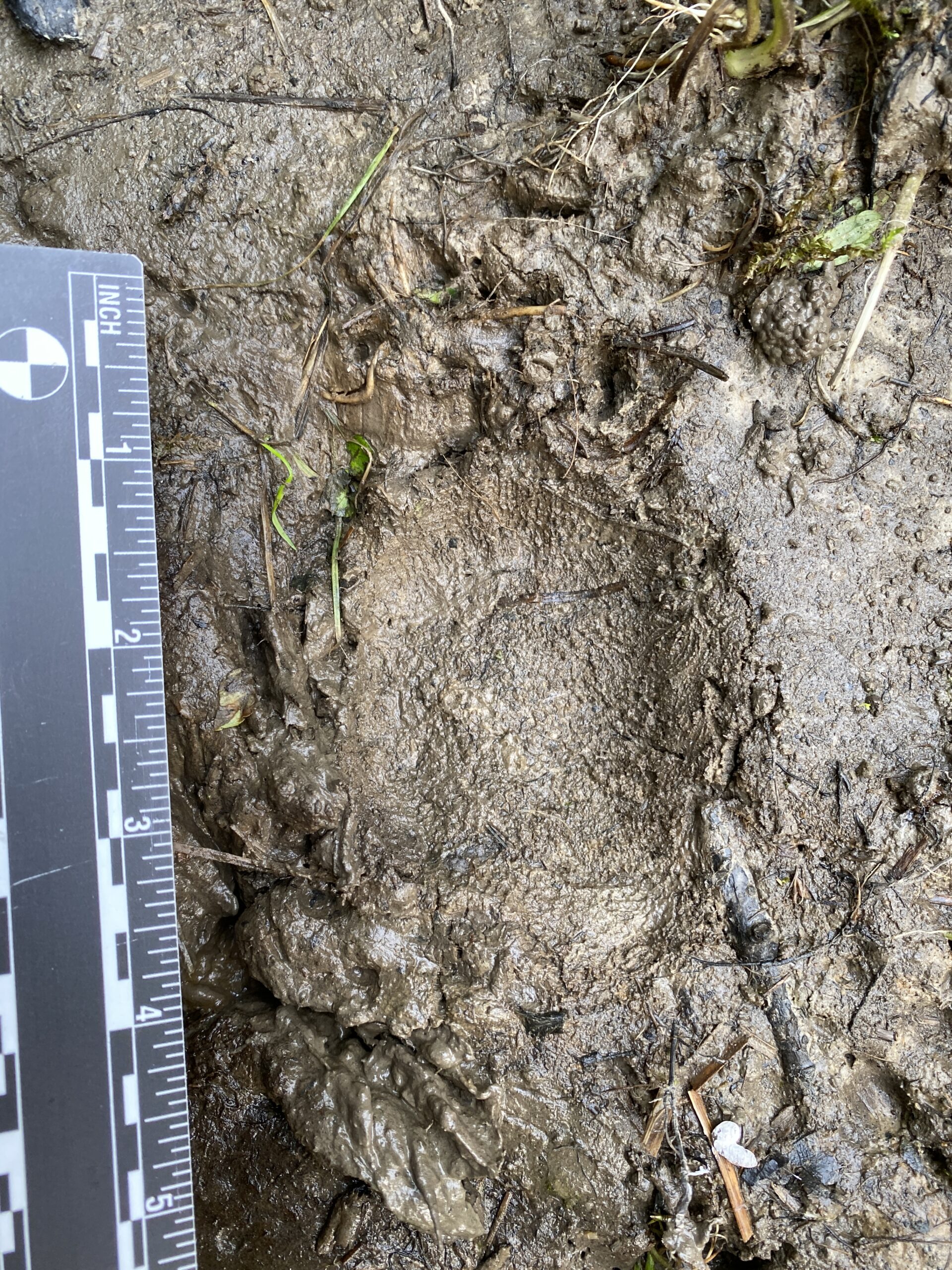
ANSWER: This is the track of a porcupine! Note the long claws for climbing, the absence of divided pads, lobing, or toes… and the presence of that pebbled texture on the bottom of the foot that is so classic for North American porcupines (and so different from African porcupines).
Question 10.
This photo comes from Shane Hawkins in Central Ohio, USA.
Who or what is it? Describe what you see.
Scroll down for the answer.
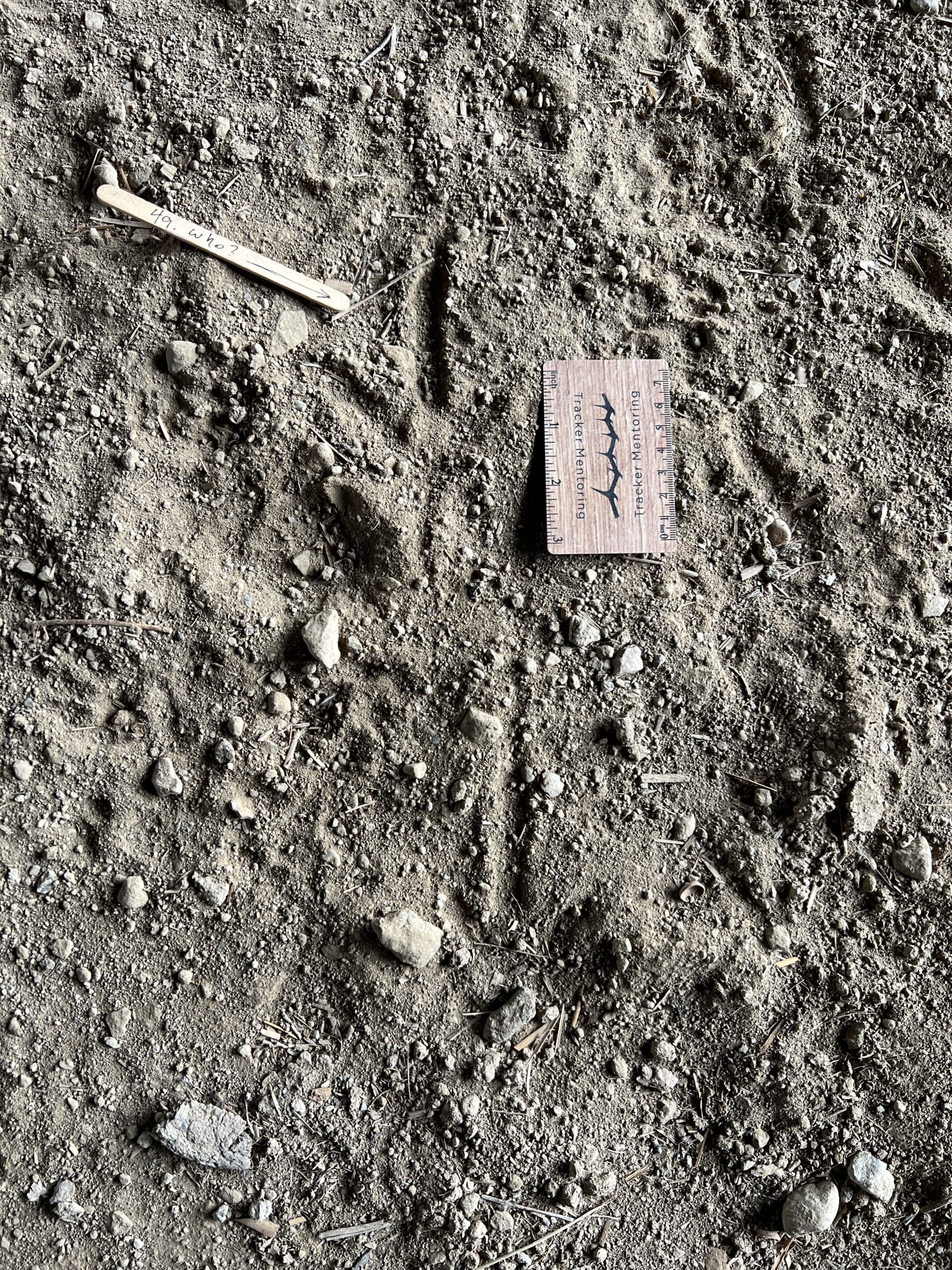
ANSWER: Note the very long, Frankenstein looking central toe in the front of the foot, with 3 toes forward and 1 toe back in the classic anisodactyl foot structure of a bird. But, this bird is big, and has robust claws. These are turkey vulture tracks!
Please go to OriginalWisdom.com and subscribe to our email list if you’d like to continue to receive these quizzes, along with our news, updates, and calendar of programs for North America and Africa.
You can also view old quizzes on the Original Wisdom website under the Resources tab, in the Tracking Gallery.
We are building a tracking database as a resource for learners. CONTACT US if you would like to submit photos from your area of the world for these quizzes – it does not have to be Africa or North America.
One hundred percent of donations made in Brandon’s name are set aside to help provide for a high school or college student to travel to South Africa to participate in an Original Wisdom program. The student must have a strong passion for photography and/or wildlife tracking and be a part of a program or class that is learning about and working towards conservation.